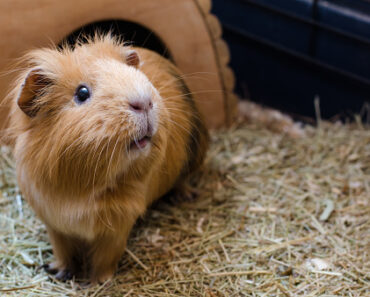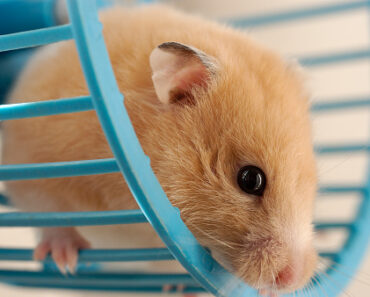The rat is a particularly sociable and intelligent rodent, which makes it an increasingly popular companion. Even if its breeding and maintenance are relatively simple, you must also be observant and spend time with it every day to quickly detect the slightest signs of injury or illness.
Of course, any deterioration in your rat’s general condition should be the reason for consulting a veterinarian. Indeed, diseases in rodents evolve very quickly and the prognosis is often much better when the treatment is early.

Is my rat healthy?
A healthy rat is active and has a good sense of balance. His coat should be clean, shiny and uniform, without any hair loss. Its breathing should not be noisy. Red secretions may be present around the eyes and nose without indicating any particular disease, as the rat naturally secretes a pigment called porphyrin. These secretions may be present when he wakes up, for example, but he should quickly clean them up by grooming himself.
After acquiring a rat, a first visit to the veterinarian will allow you to check the health of your pet. You should know that there is no vaccine routinely administered to rats.
Also, if you already have other rats at home, it is preferable to respect a “quarantine” period before introducing the newcomer into the cage.
What are the main diseases of rats?
Tumors
In males, the most frequent tumors are located in the testicles, in females, they are mammary.
There is a genetic predisposition to mammary tumors in certain lines of rats. Most are benign, but some can be more serious. On the other hand, mammary tumors are less common in ovariectomized females.
Specifically, it manifests as nodules under the skin in a variety of locations on the belly, flanks or between the hind legs. Some of them can grow very fast. The surgical removal of the tumor is indicated when it hinders the rat in its daily life, in its locomotion for example.
Parasites
Scabies : It is mostly present in young rats. Very contagious, it is caught by contact with other rodents. There are different parasites responsible for scabies in rats. In all cases, the animal scratches a lot, which explains the presence of crusts. Transmission to humans is possible but limited. The veterinarian will diagnose scabies by its characteristic appearance, or possibly by observing under the microscope a little skin obtained by scraping the lesions. The prognosis is favorable with appropriate treatment. On the other hand, without treatment, the rat’s condition can deteriorate considerably.
Ringworm : It is a parasitosis transmissible to humans, due to the fungus Trichophyton mentagrophytes. Like scabies, ringworm is contagious. The hair falls out or breaks off, primarily on the neck, back and base of the tail. Redness, dandruff and crusting may be observed. The diagnosis is made by observing the base of a few plucked hairs, or by doing a mycological culture. Treatment is usually done by applying a solution prescribed by the veterinarian to the skin.
The louse: The louse of the rat is specific to him, do not be afraid to catch it. It is mostly seen in winter, on the head and neck. In most cases, it does not cause any symptoms. If the infestation is important, the rat scratches itself. If you observe small parasites, you can collect them in a small box. Your veterinarian will be able to observe them with a magnifying glass and tell you if they are lice.
Fleas: Rats can get fleas, in most cases they are the same as in cats. You can observe the parasites directly on your rat’s coat, or their droppings which look like small black grains. The treatment, as in other species, must concern the rat but also its environment. Fleas and lice can be treated by applying antiparasitic pipettes. Be careful, don’t apply blindly to your rat the pipettes for cats or dogs. The molecule and the dose must be adapted. Your veterinarian will be able to advise you.
How to prevent respiratory problems?
The rat is a species that is very prone to respiratory problems, due to its narrow rib cage and bronchial tubes. These disorders are largely favored by a disturbance or a bad quality of the rat’s environment.
These disorders are initially manifested by sneezing, nasal discharge as well as by respiratory noises. At a more advanced stage, the rat may be in respiratory distress (legs spread, head down, immobile). It is then an emergency.
From the common cold to pneumonia, respiratory problems must be treated quickly to avoid serious complications.
healthy rat is less sensitive to infections, whatever they may be. For this reason, certain points deserve special attention on your part: feeding, respecting rest and exercise times, and housing conditions. The latter are particularly important, especially for the prevention of respiratory problems.
The cage should be placed in a quiet, clean area away from drafts, avoiding direct proximity to a radiator. You can place a hygrometer at the bottom of the cage: the ideal humidity is between 20 and 50%. Beyond this range, the appearance of respiratory problems is favored. On the other hand, very dry air can cause tail necrosis.
The litter used plays a major role in the quality of the air that your rat will breathe. Therefore, it should not be dusty or perfumed. Wood shavings are economical and widely used. Of varying quality, most are quite dusty. Straw as well as hemp or corn-based litters are ideal. On the other hand, good hygiene of the cage is essential.






